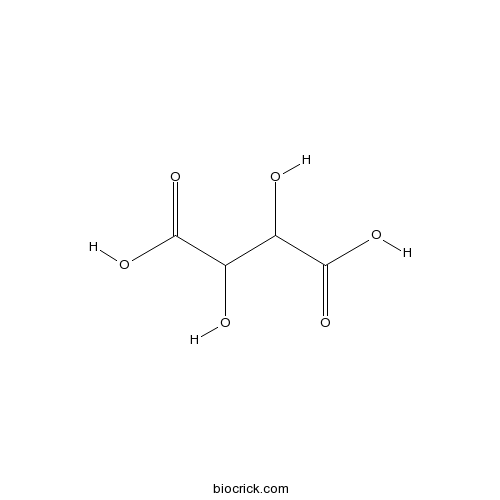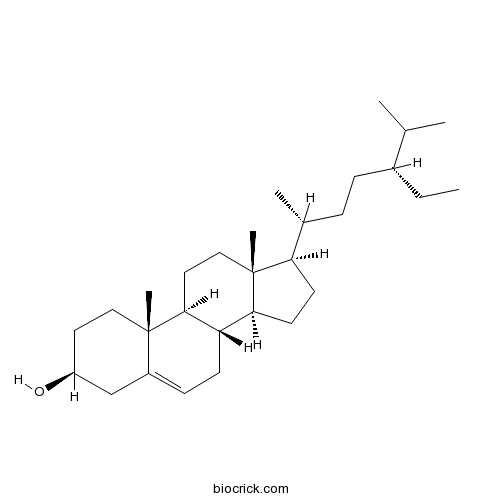Choerospondias axillaris
Choerospondias axillaris
1. The products in our compound library are selected from thousands of unique natural products; 2. It has the characteristics of diverse structure, diverse sources and wide coverage of activities; 3. Provide information on the activity of products from major journals, patents and research reports around the world, providing theoretical direction and research basis for further research and screening; 4. Free combination according to the type, source, target and disease of natural product; 5. The compound powder is placed in a covered tube and then discharged into a 10 x 10 cryostat; 6. Transport in ice pack or dry ice pack. Please store it at -20 °C as soon as possible after receiving the product, and use it as soon as possible after opening.
Natural products/compounds from Choerospondias axillaris
- Cat.No. Product Name CAS Number COA
-
BCN9052
DL-Tartaric acid133-37-9
Instructions

-
BCN3820
Stearic Acid57-11-4
Instructions

-
BCN1015
Beta-Sitosterol83-46-5
Instructions

Influence of total flavonoids derived from Choerospondias axillaris folium on aconitine-induced antiarrhythmic action and hemodynamics in Wistar rats.[Pubmed: 27599234]
It is well known that various traditional Chinese medicines produce antiarrhythmic actions. The aims of this study were to examine whether total flavones derived from Choerospondias axillaris folium (TFCF) also produced antiarrhythmic effects using a rat model of aconitine-induced arrhythmia and to compare these observations with the effects of total flavones of Choerospondias axillaris fructus (TFC). Wistar rats were orally administered TFC (0.2 g/kg) or TFCF (0.1, 0.2, or 0.4 g/kg) daily for 7 d. Subsequently, aconitine iv at 25 µg/kg was used to induce arrhythmia in these animals. Control (C) physiological saline and positive verapamil rats were also administered orally. The starting times of ventricular ectopic beats (VE), ventricular tachycardia (VT), ventricular fibrillation (VF), and heart arrest (HA) were recorded. In comparison to C, TFCF and TFC significantly prolonged the starting time of VE, VT, VF, and HA induced by aconitine. With respect to hemodynamics, TFC and high-dose TFCF were effective in reducing HR without associated changes in BP in all groups. TFC and TFCF decreased left ventricular systolic pressure (LVSP) and maximal velocity rate of ventricular pressure (+dp/dt max and -dp/dt min) with no marked effect on left ventricular end diastolic pressure (LVEDP) and -dp/dtmin. Data demonstrated that TFCF and TFC were equally effective in diminishing the aconitine-mediated arrhythmias. In addition, TFCF and TFC produced a similar reduction in HR with no accompanying change in BP. These findings indicate that the TFCF- and TFC-induced alterations may be attributed to inhibition of ventricular contraction without altering ventricular diastolic function.
Antioxidant activity of proanthocyanidins-rich fractions from Choerospondias axillaris peels using a combination of chemical-based methods and cellular-based assay.[Pubmed: 27132855]
An extract isolated from Choerospondias axillaris peels was separated into five fractions using size-exclusion chromatography. The structural composition and mean degree of polymerization (mDP) of these fractions were then characterized by acid-catalysis followed by HPLC analysis. The antioxidant activity of each fraction was determined using a combination of chemical-based methods (DPPH, ABTS(+) radical scavenging activity, ferric-reducing antioxidant power, and phosphomolybdate assay) and a cellular-based assay. All fractions tested were found to have high total phenolics contents and were rich in proanthocyanidins. The mDP of fractions (F1-F5) ranged from 1.92 to 9.25. When tested by the chemical-based assays, the antioxidant activity of the fractions did not depend on molecular weight of the phenolics. Conversely, when tested by the cellular-based assay the antioxidant activity actually decreased with increasing molecular weight of the proanthocyanidins. These experiments highlight the limitations of using chemical-based assays to establish the antioxidant activity of proanthocyanidins within biological systems.
Proanthocyanidins, Isolated from Choerospondias axillaris Fruit Peels, Exhibit Potent Antioxidant Activities in Vitro and a Novel Anti-angiogenic Property in Vitro and in Vivo.[Pubmed: 27066842]
The production of new blood vessels (angiogenesis) is an important stage in the growth and spread of cancerous tumors. Anti-angiogenesis is one strategy for controlling tumor progression. This study evaluated the antioxidant and anti-angiogenic activities of a proanthocyanidins (PAs) extract from Choerospondias axillaris peels. HPLC-MS analysis revealed that numerous oligomeric forms of the PAs were detected in the PAs extract, including dimers, trimers, tetramers, and flavan-3-ol monomers. The PAs extract possessed appreciable free radical scavenging activity (IC50/DPPH = 164 ± 7 μg/mL, IC50/ABTS = 154 ± 6 μg/mL), potent reducing power (0.930 ± 0.030 g AAE/g), and strong cellular antioxidant activity (EC50 = 10.2 ± 1.4 and 38.9 ± 2.1 μg/mL without or with PBS-wash, respectively). It could also retard various stages of angiogenesis, such as the migration of endothelial cells and the creation of tubes, without causing toxicity to the cells. With regard to intracellular signal transduction, the PAs extract attenuated the phosphorylation of Akt, ERK, and p38MAPK dose-dependently in endothelial cells from human umbilical veins. In transgenic zebrafish embryo, new blood vessel formation was suppressed by PAs extract in a concentration-dependent manner at 72 h post fertilization. Thus, these results suggest that PAs from C. axillaris peels could be a good source of natural inhibitors to target angiogenesis.
[Spatial heterogeneity and influencing factors of soil phosphorus concentration in a mid-subtropical Choerospondias axillaris deciduous broad-leaved forest, China.][Pubmed: 29726174]
None
Impact of in vitro simulated digestion on the potential health benefits of proanthocyanidins from Choerospondias axillaris peels.[Pubmed: 28433306]
The influence of passage through a simulated gastrointestinal tract (GIT) on the stability and bioaccessibility of proanthocyanidins isolated from fruit (Choerospondias axillaris) peel was studied. In addition, the effects of the simulated GIT on the antioxidant and α-glucosidase inhibitory activities of proanthocyanidins extracts were evaluated. Gastric digestion had little effect on total polyphenol content (TPC) or mean degree of polymerization (mDP) of crude and purified extracts. However, intestinal digestion led to a significant decrease (about 26% and 19%) in TPC and (about 12% and 7%) in mDP for crude and purified extracts, respectively. The observed reduction in TPC and mDP levels was attributed to interactions of proanthocyanidins with pancreatic enzymes, rather than due to the chemical conditions during digestion. Only small flavan-3-ol molecules (monomers, dimers and trimers) could diffuse into the dialysis tubing used to simulate the intestinal wall. Changes in antioxidant activity during digestion were correlated to changes in TPC. After simulated GIT digestion, over 85% of α-glucosidase inhibitory activity of both extracts was preserved. These results indicate that the majority of the proanthocyanidins maintained their biological activities after passage through the simulated GIT, and were therefore still capable of providing valuable health benefits.
Separation and characterization of polyphenolics from underutilized byproducts of fruit production (Choerospondias axillaris peels): inhibitory activity of proanthocyanidins against glycolysis enzymes.[Pubmed: 26442714]
Bioactive proanthocyanidins were isolated from the peel of Choerospondias axillaris fruit, which is a waste product of the food processing industry. Compositional analysis indicated that the proanthocyanidins had extension units mainly consisting of epicatechin gallate or epicatechin, and terminal units mainly consisting of catechin. Numerous polymeric forms of the molecules were detected, including monomers, dimers, and trimers. Certain fractions exhibited strong α-amylase or α-glucosidase inhibition in a dose-dependent manner. Furthermore, their inhibitory activities depended on their degree of polymerization and galloylation. For example, the most bioactive fraction had α-amylase and α-glucosidase inhibitory activities (IC50 values) of 541 and 3.1 μg mL(-1), respectively. This study demonstrates that proanthocyanidins from C. axillaris peels can inhibit carbohydrate digestive enzymes in vitro and may therefore serve as antidiabetic ingredients in functional or medical foods.
Sodium Hydroxide Activated Nanoporous Carbons Based on Lapsi Seed Stone.[Pubmed: 26353674]
Nanoporous activated carbons (ACs) were prepared from Lapsi (Choerospondias axillaris) seed powder by chemical activation with sodium hydroxide (NaOH) at different NaOH impregnation ratios. The prepared ACs were characterized by Fourier transform-infrared (FTIR) spectroscopy, Raman scattering, X-ray diffraction (XRD), and scanning electron microscopy (SEM). Semi-quantitative information on the surface properties was obtained by estimating iodine number. FTIR spectra showed the presence of oxygenated functional groups such as hydroxyl, carbonyl, and carboxyl in the prepared ACs. Raman scattering showed clear D and G bands in the spectra. The intensity ratio of G and D band peak intensity was ca. 1.39 at lowest NaOH and Lapsi seed powder ratio 0.25:1 showing high graphitic degree. This ratio decreased with increase in the NaOH impregnation ratio and reached minimum ca. 0.94 (comparable with commercial AC) at NaOH and Lapsi seed powder ratio 1:1 demonstrating that higher NaOH impregnation reduces the graphitic structure of the carbon. XRD patterns showed two broad peaks at diffraction angles of approximately 25 and 43 degrees indicating the amorphous structure. Surface properties of the ACs (BET surface area, pore volume, and pore size distributions) were evaluated by nitrogen adsorption-desorption isotherm. Our ACs showed strong methylene blue adsorption property (maximum methylene blue is ca. 200 mg/g). Judging from the iodine number and methylene blue values, structure, and surface areas, it can be concluded that NaOH impregnation ratio is one of the key parameters to tune the surface properties of Lapsi seed stone-based activated carbons.
Comparison of bioactivities and phenolic composition of Choerospondias axillaris peels and fleshes.[Pubmed: 26249806]
Choerospondias axillaris is both an edible and medicinal fruit. It has a growing popularity and economic importance due to its nutritive value and medicinal effects, but comprehensive information on the chemical composition and bioactivity of its fruits is still lacking. Therefore the aim of this study was to investigate the antioxidant, antimicrobial and antiproliferative effects and chemical composition of peel polyphenolic (PP) and flesh polyphenolic (FP) extracts from C. axillaris.
[Determination of Mineral Elements in Choerospondias Axillaris and Its Extractives by ICP-AES].[Pubmed: 26197601]
Nine elements in Choerospondias axillaris flesh, peels, aqueous extractives and gastric digesta were determined by the inductively coupled plasma atomic emission spectrometry (ICP-AES) in the present study. The results showed that the contents of Fe, Ca, Zn, Mn, Al, Mg, Cu, K and P in the flesh were 27.37, 269.88, 1.51, 2.45, 1.95, 195.30, 2.45, 2,970.11, and 133.94 µg · g(-1), respectively. They are lower than that in the peels, about 40.31%, 11.70%, 21.68%, 4.27%, 10.58%, 15.76%, 68.72%, 42.04%, and 22.59%, respectively. For microwave assistant extraction, the release rate of Mn was highest (81.68%), while Fe was lowest (4.42%) in the flesh. The release rate of Zn was the highest (79.00%), while that of A1 was the lowest (4.94%) in the peels. Except Fe, Cu and Zn, the release rates of the other elements in flesh were higher than those in the peels. After gastric digestion, the release rates of nine elements were 3.25%-87.51% in the flesh and 7.11%-50.69% in the peels. The release rates of minerals in the flesh were found to be higher than those in the peels except Fe and Cu. Microwave assistant extraction can more efficiently release Fe, Ca, Mn, Mg and K from the flesh than the gastric digestion do. While gastric digestion had a significant effect on the peels, the release rates of elements, except Zn, were higher than those in microwave assistant extraction. Therefore, the difference of distribution and release of mineral elements between peels and flesh of Choerospondias axillaris was understood, which will provide a positive guide for further study of bioavailability of minerals for human body.


